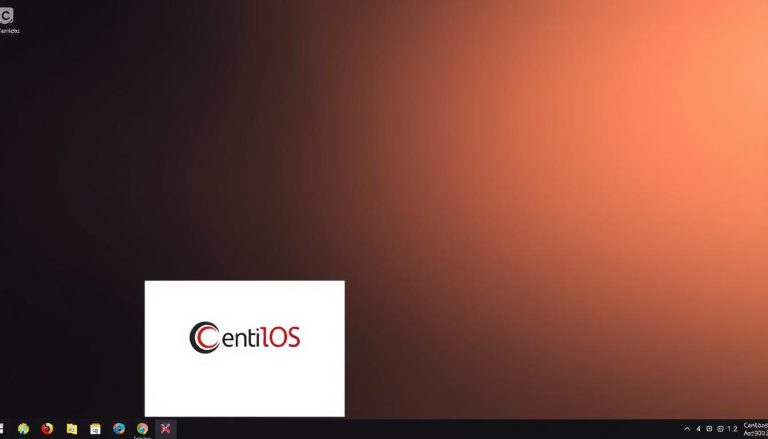As a professional copywriting journalist, I’m here to provide you with an informative introduction to Lua, a powerful scripting language used in various industries. Lua is an open-source language that was created in 1993 by a team of developers from Pontifical Catholic University in Rio de Janeiro, Brazil. It is known for its small size, portability, and efficiency, making it a popular choice for embedded systems and bespoke applications.
Lua has gained significant popularity in gaming and software development, being utilized by famous software applications like Angry Birds, Word of Warcraft, and Apache HTTP server. It’s lightweight, fast, easily embeddable, and powerful, which makes it an ideal language for developing a wide range of applications.
Key Takeaways:
- Lua is an open-source scripting language designed for embedded systems and bespoke applications.
- It was created in 1993 by a team of developers from Pontifical Catholic University in Rio de Janeiro, Brazil.
- Lua is known for its small size, excellent portability, and efficiency.
- It is used in various industries, including gaming and software development.
- Notable software applications like Angry Birds, Word of Warcraft, and Apache HTTP server utilize Lua.
The History of Lua
Lua, a widely used scripting language, has an interesting history that dates back to 1993. It was developed by a team at Pontifical Catholic University in Rio de Janeiro, Brazil, with the goal of creating a lightweight, portable, and easy-to-embed scripting language for their projects.
Prior to Lua, the team was working with TechGraf’s data-configuration/description languages – data-entry language (DEL) and SOL (Simple Object Language) – to enhance program functionality at Petrobras. However, they soon realized the need for their own scripting language that could be cross-platform and user-friendly, leading to the birth of Lua.
“Lua, meaning ‘moon’ in Portuguese, was chosen as the name for the language, representing the team’s desire to create a scripting language that would shine brightly in the programming world.”
Since its creation, Lua has gained popularity in various industries, including gaming and software development. Its simplicity, efficiency, and versatility have made it a go-to language for embedding in applications and extending functionality.
The Birth of Lua
| Year | Milestone |
|---|---|
| 1993 | Lua was developed by a team from Pontifical Catholic University in Rio de Janeiro, Brazil. |
| 1995 | Lua 2.5 was released, introducing a new virtual machine and garbage collector. |
| 2003 | Lua 5.0 was released, featuring a new reference mechanism and a redesigned standard library. |
| 2015 | Lua 5.3 was released, bringing improvements to syntax and performance. |
| Present | Lua continues to evolve and is widely used in various industries, with an active community of developers. |
Why Choose Lua?
- Lua was designed to be lightweight, portable, and easy to embed in other applications.
- It has a simple and intuitive syntax, making it easy to learn and use.
- Lua offers a range of features, such as dynamic typing and support for multiple programming paradigms.
- Its extensive documentation and active community make it a valuable resource for developers.
With its rich history and numerous benefits, Lua continues to shine as a scripting language of choice for developers worldwide.
Features and Benefits of Lua
Lua, as a programming language, offers a range of features that make it a popular choice among developers. One of its key strengths is its extensibility, allowing developers to easily add custom functionality to their applications. Whether you need to create plugins or extend the capabilities of existing software, Lua provides the flexibility needed to tailor your applications to specific requirements.
Furthermore, Lua is highly portable, which means you can run Lua programs on various platforms without major modifications. This portability makes Lua an ideal choice for embedded systems and bespoke applications that need to run on different operating systems or hardware configurations.
Another notable feature of Lua is its efficiency. Lua is designed to be lightweight and performant, even in resource-constrained environments. The small size of the Lua interpreter, along with its minimal memory footprint, allows Lua scripts to execute quickly and efficiently. This makes Lua an excellent choice for applications where performance is critical, such as real-time systems and game development.
Aside from its features, Lua offers numerous benefits to developers. The language’s simplicity and ease of use make it accessible to beginners while still providing powerful capabilities for experienced programmers. Lua’s popularity within the gaming industry has also resulted in a vibrant and active community, with a wealth of resources, documentation, and examples readily available. Whether you’re a beginner or an expert, Lua provides a solid foundation for building robust and scalable applications.
| Feature | Benefits |
|---|---|
| Extensibility | Customize applications with ease |
| Portability | Run Lua programs on various platforms |
| Efficiency | Lightweight and performant for resource-constrained environments |
| Simplicity | Accessible to beginners, powerful for experienced programmers |
| Active Community | Abundance of resources, documentation, and examples available |
Lua Basics: Syntax and Usage
When it comes to the basics of Lua programming, understanding its syntax and usage is essential. Lua has a simple and intuitive syntax that makes it easy to learn and work with. Let’s dive into the key elements of Lua syntax:
Variables and Data Types:
In Lua, variables are dynamically typed, meaning they don’t have fixed data types. Instead, the data type is determined by the value assigned to the variable. Lua supports various data types, including numbers, strings, booleans, tables, and the special value “nil” which represents the absence of a value.
Control Structures:
Lua provides control structures such as if statements, loops, and functions. If statements allow you to execute a block of code conditionally based on a specific condition. Loops, like the “for” and “while” loops, enable you to iterate over a sequence of values or execute a block of code repeatedly. Functions in Lua are defined using the “function” keyword and can take arguments and return values.
Tables and Libraries:
One of the powerful features of Lua is its table data structure. Tables in Lua can be used as arrays, lists, tuples, or even as a way to represent objects. Tables can contain values of different types and can be nested within each other, allowing for complex data structures. Additionally, Lua provides a set of built-in libraries that offer functions for handling I/O operations, mathematical calculations, and string manipulation, among other things.
Understanding the syntax and usage of Lua is crucial for any developer looking to leverage the power of this scripting language. Whether you’re a beginner or an experienced programmer, Lua’s simplicity and versatility make it a great choice for a wide range of applications.
Lua Scripting: Extending and Customizing Functionality
Lua provides extensive documentation and resources for scripting. The Lua language itself is highly extensible, allowing developers to add custom functionality to their applications. Lua’s scripting capabilities enable the creation of plugins and extensions for existing software.
With Lua scripting, developers have the flexibility to tailor their applications to specific requirements. Whether it’s adding new features, modifying existing functionality, or integrating with external systems, Lua offers a range of tools and techniques to accomplish these tasks.
Lua’s libraries play a crucial role in extending its functionality. These libraries provide additional functionality for handling databases, working with files, and networking. Developers can leverage these libraries to streamline their development process and enhance the capabilities of their Lua applications.
The Lua community is known for its active engagement and support. Numerous online resources, forums, and examples are available to help developers explore Lua’s scripting capabilities. This vibrant community fosters collaboration, knowledge sharing, and learning opportunities, making Lua a popular choice for developers seeking to extend and customize their applications.
To summarize, Lua scripting provides developers with the tools and resources to extend and customize the functionality of their applications. With extensive documentation, powerful libraries, and an active community, Lua offers a versatile solution for developers looking to take their applications to the next level.
Lua Integration: Interfacing with Other Languages
Lua, being a versatile scripting language, offers seamless integration with other programming languages, making it a valuable tool for developers. One of the key integration capabilities of Lua is its ability to interface with C and C++. This allows developers to leverage existing libraries and code in their Lua applications, enhancing functionality and saving development time. The integration is made possible through Lua’s C API, which enables developers to call Lua functions from C code and vice versa.
By integrating Lua with C or C++, developers can combine the lightweight and efficient nature of Lua with the power and flexibility of these languages. This opens up possibilities for creating high-performance applications, especially in areas such as game development, where Lua has already established its presence. The integration with C and C++ also enables developers to access system-level resources and interact with hardware, further expanding the capabilities of their Lua applications.
In addition to its integration with C and C++, Lua also offers support for interfacing with databases. This feature allows developers to store and retrieve information from databases using Lua scripts, making it a valuable tool for managing data-intensive applications. Whether it’s connecting to an SQL database or working with NoSQL alternatives, Lua provides the necessary functionality and flexibility to interact with various database systems.
Table: Lua Integration Capabilities
| Integration | Benefits |
|---|---|
| Integration with C/C++ | Allows developers to leverage existing libraries and code, enhancing functionality and saving development time. Enables combining the lightweight nature of Lua with the power and flexibility of C/C++. |
| Integration with Databases | Enables Lua scripts to store and retrieve information from databases, making it a valuable tool for managing data-intensive applications. |
The ability of Lua to seamlessly integrate with other languages and databases makes it a versatile and powerful programming language for a wide range of applications. Whether developers are looking to extend functionality, access system-level resources, or manage data, Lua provides the necessary tools and capabilities to meet their requirements.
Conclusion
Lua is a powerful scripting language that has become increasingly popular in various industries. Its lightweight design, versatility, and extensive documentation make it a great choice for developers seeking to enhance the functionality of their applications. Whether you are a beginner or an experienced programmer, Lua offers a user-friendly environment for scripting and customization.
With Lua’s integration capabilities, you can easily interface with other programming languages and databases, allowing you to leverage existing code and resources. This versatility makes Lua a valuable tool for embedded systems, game development, and web applications.
Whether you are looking for a Lua tutorial or exploring the world of scripting languages, Lua provides an excellent platform for learning and experimentation. Its simplicity and support for multiple programming paradigms make it a valuable language to have in your toolkit.
FAQ
What is Lua?
Lua is an open-source scripting language designed for embedded systems and bespoke applications. It is known for its small size, excellent portability, and efficiency.
When was Lua created?
Lua was created in 1993 by a team of developers from Pontifical Catholic University in Rio de Janeiro, Brazil.
What are the features of Lua?
Lua offers features such as extensibility, portability, multiple programming paradigms support, and a simple syntax.
What industries use Lua?
Lua has gained popularity in various industries, including gaming and software development. It is used by famous software applications like Angry Birds, Word of Warcraft, and Apache HTTP server.
How is Lua integrated with other languages?
Lua can be easily integrated with other programming languages, such as C and C++. Lua’s C API allows developers to call Lua functions from C code and vice versa.
Is there documentation available for Lua scripting?
Yes, Lua provides extensive documentation and resources for scripting. The Lua language itself is highly extensible, allowing developers to add custom functionality to their applications.
Janina is a senior specialist in information technology


